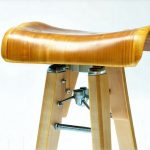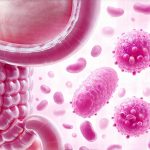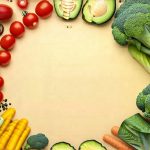Constipation, a common digestive issue characterized by infrequent bowel movements or difficulty passing stool, impacts millions worldwide. It’s often caused by a combination of factors including diet, hydration, physical activity, and even stress levels. While many solutions are proposed, one consistently stands out as fundamental to regular digestion: dietary fiber. Understanding the role of fiber – what it is, how it works, and how much we need – is crucial for maintaining digestive health and preventing uncomfortable constipation episodes.
This article will explore the multifaceted relationship between dietary fiber and constipation relief. We’ll delve into the different types of fiber, their specific mechanisms in promoting bowel regularity, and practical ways to incorporate more fiber-rich foods into your daily diet. The goal isn’t to offer a quick fix but to provide a comprehensive understanding that empowers informed choices for long-term digestive wellness.
Understanding Dietary Fiber
Dietary fiber is essentially the indigestible portion of plant-based foods – fruits, vegetables, grains, and legumes. Unlike other food components like proteins, fats, and carbohydrates which are broken down and absorbed by the body, fiber largely passes through our digestive system intact. This seemingly simple characteristic is what makes it so vital for healthy bowel function and overall gut health. It’s not a single substance but rather a collection of plant compounds with diverse properties.
There are two main types of dietary fiber: soluble and insoluble. Each plays a distinct, yet complementary role in preventing constipation and supporting digestive well-being. Understanding their differences is key to optimizing your fiber intake for best results.
The Mechanics of Fiber & Constipation Relief
Fiber’s ability to combat constipation stems from several interwoven mechanisms within the digestive system. Insoluble fiber adds bulk to stool, making it easier to pass through the intestines. Soluble fiber, on the other hand, dissolves in water forming a gel-like substance which softens the stool and facilitates smoother passage. This dual action helps regulate bowel movements and prevent both constipation and diarrhea. Furthermore, fiber promotes a healthy gut microbiome—the community of microorganisms residing in our digestive tract—which is increasingly recognized as essential for overall health and regular digestion.
Insoluble Fiber: The Bulk Builder
Insoluble fiber doesn’t dissolve in water at all. Think of wheat bran, vegetable skins, or the fibrous parts of fruits and vegetables. Its primary function is to increase stool volume and accelerate the movement of waste through your digestive tract. This faster transit time reduces the amount of time stool sits in the colon, minimizing water absorption and preventing it from becoming hard and difficult to pass. Foods rich in insoluble fiber include whole wheat bread, brown rice, most vegetables, and fruit skins.
Soluble Fiber: The Softener & Stabilizer
Soluble fiber dissolves in water to form a gel-like substance within the digestive system. This softening action makes stool easier to move through the intestines, reducing strain during bowel movements. Beyond its impact on stool consistency, soluble fiber also plays a role in regulating blood sugar levels and lowering cholesterol. Excellent sources of soluble fiber include oats, beans, peas, apples, citrus fruits, and barley.
Hydration & Fiber: A Dynamic Duo
While increasing fiber intake is beneficial, it’s absolutely crucial to accompany that increase with adequate hydration. Fiber absorbs water – both soluble fiber in the digestive tract and water consumed through beverages. If you don’t drink enough fluids while consuming a high-fiber diet, stool can actually become harder and constipation may worsen. Aim for at least eight glasses of water per day, adjusting based on activity level and climate. Think of hydration as an essential partner to fiber in achieving digestive regularity.


















